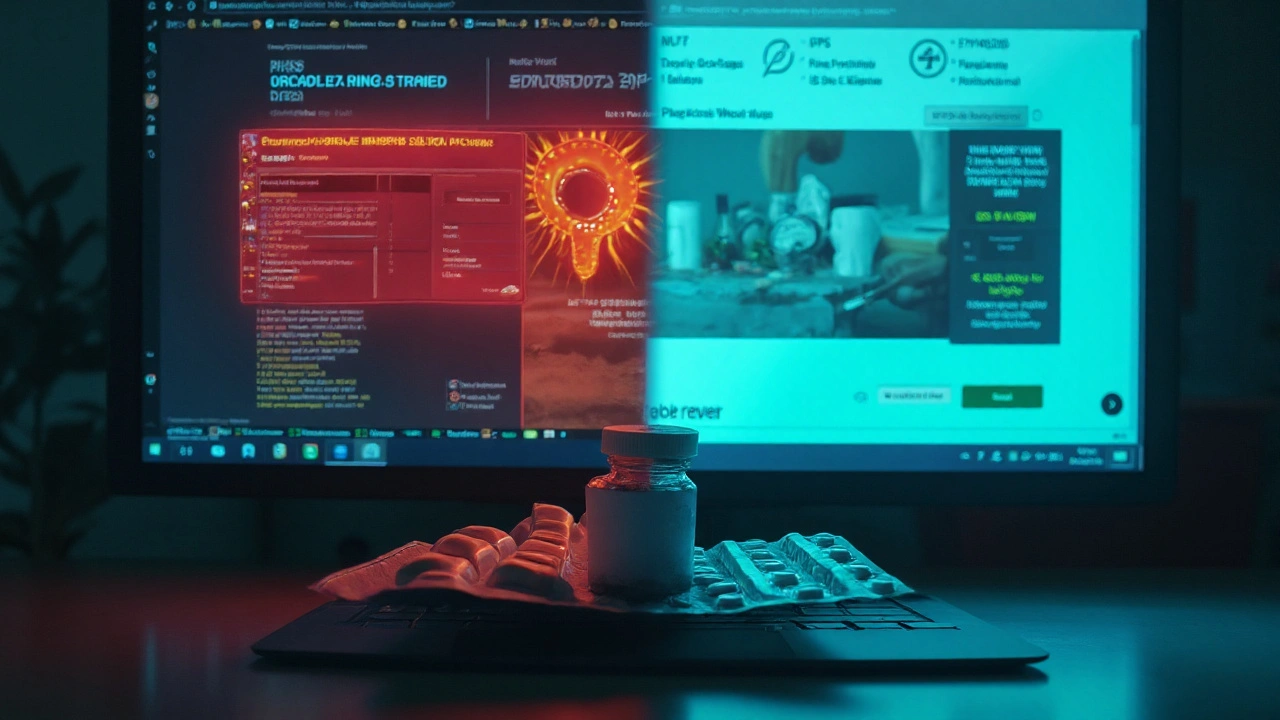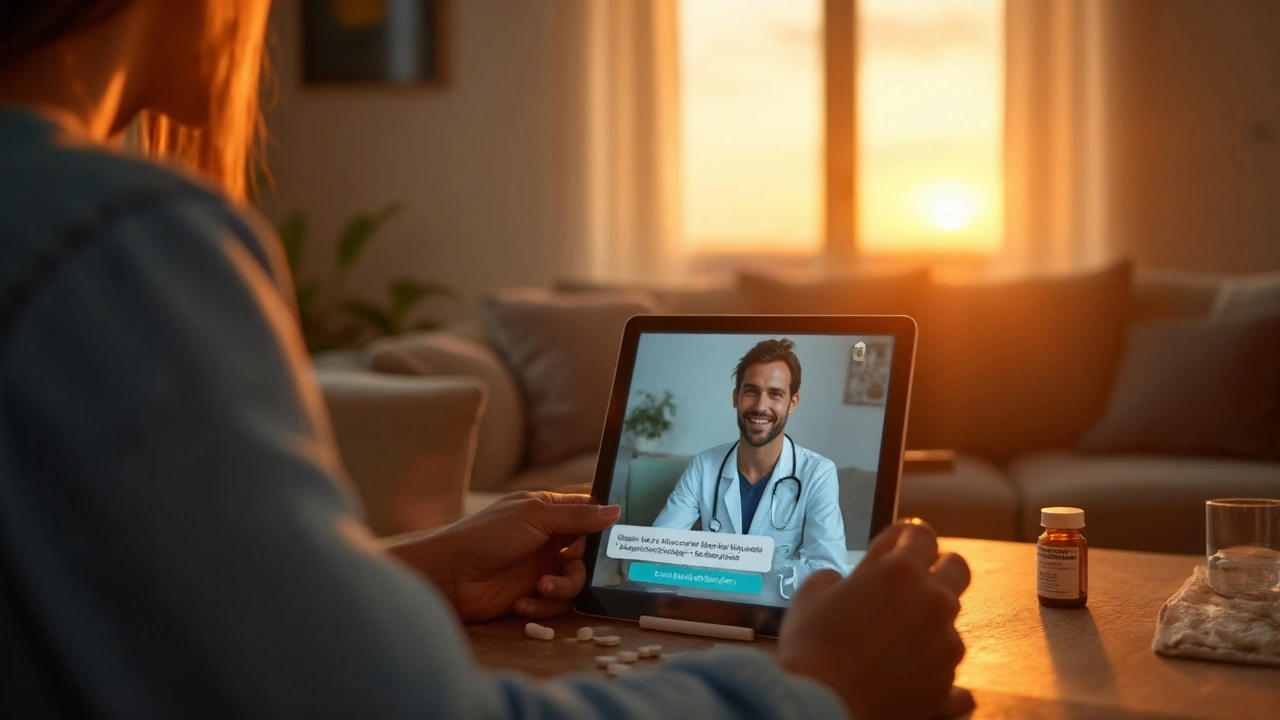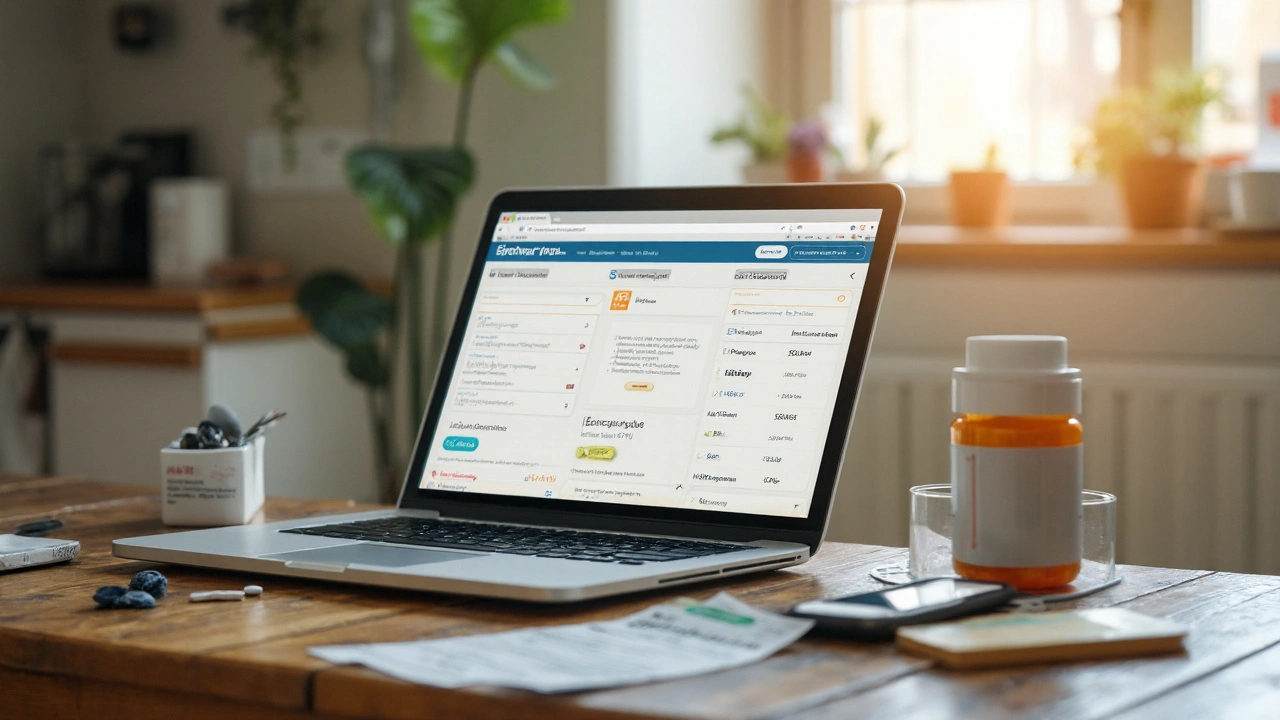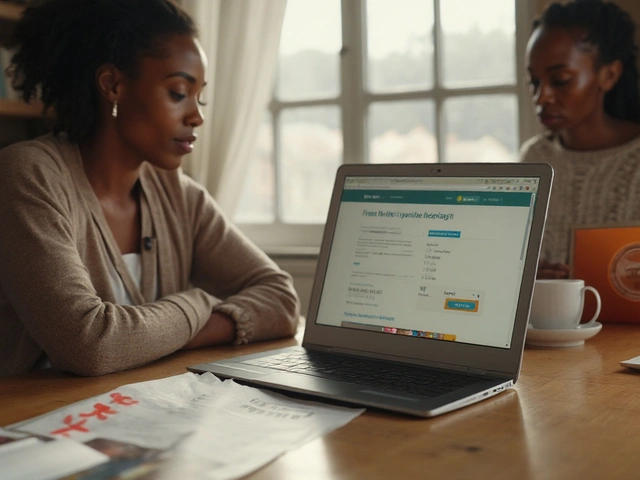You want heartburn relief that works, shows up on your doorstep, and doesn’t wreck your budget. That’s the promise of generic Nexium (esomeprazole) online. Here’s the reality: it can be very affordable, but only if you buy from licensed pharmacies, match the right dose to your needs, and avoid sketchy sites. This guide gives you the safe shortcuts-prices you can expect in 2025, how to verify a pharmacy, what form to pick, and when a different option might be smarter. If you’re here to buy generic Nexium online, you’ll leave knowing exactly how to do it-without gambling on fakes or wasting money.
What you’re actually buying (and who it’s for)
Generic Nexium is esomeprazole, a proton pump inhibitor (PPI). It cuts stomach acid at the source, which is why it’s used for frequent heartburn, GERD, healing erosive esophagitis, and conditions with high acid output. It isn’t an instant fix-a PPI needs a day or a few to fully kick in-so if “right now” relief is your goal, you’ll pair it with an antacid for breakthrough symptoms.
Quick facts you can use:
- Active ingredient: Esomeprazole magnesium.
- OTC form (US): 20 mg delayed-release capsules or tablets; typical self-care course is 14 days per FDA labeling.
- Prescription forms: 20 mg and 40 mg delayed-release capsules; 10 mg/20 mg/40 mg packets for oral suspension; some IV forms in hospitals.
- Onset: Partial relief may start within 24 hours; full effect often by day 3-4.
- Best taken: Before the first meal of the day, consistently.
Who it’s good for:
- Adults with frequent heartburn (2+ days/week) needing a 14-day OTC course.
- People with diagnosed GERD or erosive esophagitis on a prescription plan.
- Patients who didn’t do well on omeprazole or need a different PPI option.
Who should not self-start without medical advice:
- Adults with alarm signs: trouble swallowing, black stools, vomiting blood, chest pain, unexplained weight loss, or new severe pain.
- People using clopidogrel, warfarin, high-dose methotrexate, certain antifungals, HIV meds, or tacrolimus-drug interactions can matter. Discuss with your prescriber.
- Pregnant or breastfeeding individuals-safety looks reasonable but confirm with your clinician first.
- Children-follow pediatric guidance; dosing differs by age/weight.
Why esomeprazole and not another PPI? PPIs are more alike than different. Some folks simply respond better to one than another. If you’ve tried omeprazole and it wasn’t enough, esomeprazole is a perfectly reasonable next step per common clinical practice and gastroenterology guidelines.

Buy it online the right way: prices, proof, and practical steps
Let’s hit the two things that save you the most: verifying the pharmacy and knowing fair prices in 2025.
Verification-non-negotiables for a legal US online pharmacy:
- Requires a valid US prescription for prescription strengths (like 40 mg). If a site will ship Rx-only doses “no Rx,” back out.
- Has a US street address and phone support, and lists the state license number(s). Cross-check on your state board of pharmacy website.
- Shows pharmacy accreditation like NABP .pharmacy or VIPPS (the NABP runs both). Legit sites don’t hide who they are.
- Secure checkout (https), clear privacy/returns, and pharmacist counseling access.
Typical US cash price ranges as of August 2025 (your local taxes/fees may vary):
- OTC esomeprazole 20 mg (14-count): store brands $10-$18; brand-name Nexium often $15-$28. Warehouse clubs and big-box retailers usually run cheapest.
- Rx esomeprazole 20 mg/40 mg (30 caps): many discount programs land between $8-$25 for generics at high-volume pharmacies; some areas see $30-$60.
- Mail-order 90-day supply: commonly $20-$75 for generic with coupons or plan-negotiated rates.
- Shipping: $0-$7 standard (3-7 business days) is common; expedited adds $10-$25.
Ways to pay less without cutting corners:
- Pick store-brand OTC first for short courses-they’re bioequivalent.
- Ask your prescriber for a 90-day Rx if you’re on a maintenance dose; 90-day fills usually drop the per-pill price.
- Compare three prices: your insurance mail-order, a local big-box pharmacy with a coupon price, and a reputable online pharmacy cash price. Go with the lowest total after shipping.
- Search for pharmacy-level coupons (good for generics), not manufacturer brand coupons (rarely help for generics).
- Use FSA/HSA funds if eligible.
- If clopidogrel is in your med list, ask your cardiology team about pantoprazole instead; it can simplify things and avoid a switch later.
Step-by-step to buy online safely today:
- Decide what you need: a 14-day OTC course or a prescription strength/longer supply.
- Check your symptoms against the red flags list above. If any alarm signs, stop and contact a clinician first.
- Short course only? Compare OTC esomeprazole store brands across 2-3 reputable retailers; choose the cheapest per dose with reasonable ship time.
- Longer-term or higher dose? Get a prescription from your clinician or a licensed US telehealth service that takes a real history.
- Pick a licensed online pharmacy: verify state license (state board website), look for NABP credentials, and confirm they require prescriptions for Rx-only strengths.
- Price it three ways (mail-order, big-box with coupon, online cash). Include shipping. Choose the lowest total from a licensed source.
- Place the order: upload Rx or have the pharmacy contact your prescriber, choose standard shipping, and set refill reminders.
- On delivery: check the bottle-correct name (esomeprazole), strength, quantity, lot number, expiration date, and the pharmacy’s label with your name and the pharmacist’s info.
Quick quality check on arrival:
- Packaging should be sealed and professional, with FDA-required label info.
- Medication should be uniform; no crumbling, off smells, or mismatched colors beyond what the pharmacy explains for that manufacturer.
- If anything looks off, call the pharmacy before taking it.
How does esomeprazole stack up against other PPIs you might see when price-comparing?
| Medication | Common OTC/Rx | Typical adult doses | Time to max effect | 2025 US cash price range | Notable interactions | When it’s a good pick |
|---|---|---|---|---|---|---|
| Esomeprazole (generic Nexium) | OTC 20 mg; Rx 20/40 mg | OTC: 20 mg daily x14 days; Rx: 20-40 mg daily | 3-4 days | OTC 14 ct: $10-$18; Rx 30 ct: $8-$60 | Clopidogrel (theoretical), warfarin (monitor), methotrexate (high-dose) | Didn’t respond to omeprazole or prefers this brand’s response |
| Omeprazole | OTC 20 mg; Rx 10/20/40 mg | OTC: 20 mg daily x14 days; Rx: 20-40 mg daily | 3-4 days | OTC 14 ct: $8-$15; Rx 30 ct: $5-$40 | Clopidogrel (more concern than pantoprazole) | Cheapest starting point, wide availability |
| Pantoprazole | Rx 20/40 mg (OTC not widely available in US) | Rx: 20-40 mg daily | 3-4 days | Rx 30 ct: $6-$40 | Fewer CYP2C19 interactions; often favored with clopidogrel | If you take clopidogrel or had issues on omeprazole/esomeprazole |
| Lansoprazole | OTC 15 mg; Rx 15/30 mg | OTC: 15 mg daily x14 days; Rx: 15-30 mg daily | 3-4 days | OTC 14 ct: $9-$17; Rx 30 ct: $6-$45 | Theophylline (monitor), tacrolimus | Comparable option if price is best at your pharmacy |
Note: Prices reflect common cash ranges from major US retailers and discount programs as of Aug 2025. Your exact price depends on location, supply chain, and pharmacy contracts.
Pro tips from the pharmacy counter:
- Capsule vs tablet vs packet: If you have trouble swallowing, ask for packets for oral suspension or a generic that’s okay to open. Many delayed-release capsules can be opened and the granules sprinkled on applesauce-check the specific manufacturer’s instructions on your label.
- Take it right: 30-60 minutes before breakfast. Consistency beats “whenever I remember.”
- Lifestyle tweaks that amplify the med: earlier dinners, elevating the head of the bed, cutting late caffeine/alcohol, smaller meals.
- Reassess timeline: OTC course is 14 days. If you’re needing frequent courses, talk to a clinician. Long-term daily use should be supervised.

Risks, red flags, smarter alternatives, and your next move
Safety first: what to watch for and how to avoid unnecessary risk.
Online pharmacy red flags-hard stop if you see these:
- Ships prescription-strength PPIs without a prescription or a real telehealth evaluation.
- No physical address, no listed pharmacist, or no state license info.
- Prices that are “too-good-to-be-true” by a huge margin compared to the ranges above.
- Non-secure checkout (no https) or asks for weird payment methods like cryptocurrency for common meds.
- Foreign sites pitching “worldwide no-Rx” to US customers. That’s not legal and not safe.
Side effects you might notice:
- Common: headache, abdominal discomfort, gas, constipation or diarrhea, nausea. Usually mild and short-lived.
- Less common but important: low magnesium with long-term use (muscle cramps, palpitations), low vitamin B12 over time, rash, or rare kidney issues. Report unusual symptoms promptly.
- Infections: A small increase in certain gut infections (like C. difficile) has been observed with chronic PPI use-keep doses/timeframes appropriate.
Drug interactions and medical conditions-have a quick conversation if these apply:
- Clopidogrel: some PPIs can reduce activation. Many cardiology teams prefer pantoprazole if a PPI is needed.
- Warfarin: monitor INR when starting/stopping.
- High-dose methotrexate: PPIs can increase levels-coordination needed.
- Antifungals (ketoconazole, itraconazole), atazanavir, certain thyroid meds: absorption can change with lower stomach acid.
- Severe liver disease: dosing adjustments may be needed.
Smart use rules of thumb (based on FDA labeling and gastroenterology guidelines):
- Use the lowest effective dose for the shortest time that keeps symptoms controlled.
- For uncomplicated heartburn, try a 14-day OTC course; if symptoms return quickly, talk to your clinician rather than stacking courses back-to-back.
- For chronic GERD on maintenance therapy, schedule a review every 6-12 months. Consider step-down or on-demand approaches if appropriate.
- Long-term users: ask about magnesium and B12 checks if you have symptoms or are at risk.
Where does this guidance come from? The US Food and Drug Administration (FDA) sets OTC labeling and safety communications for PPIs. The American College of Gastroenterology (ACG) provides GERD management guidelines, and the National Association of Boards of Pharmacy (NABP) accredits safe online pharmacies. Those are the gold standards clinicians use in day-to-day care.
FAQ-quick answers you probably came here for:
Do I need a prescription? For 20 mg OTC courses, no. For 40 mg or longer-term therapy, yes-US law requires a prescription.
How fast will I feel better? Some relief can show up day one, but give it 3-4 days for the full effect. Keep an antacid handy for breakthrough heartburn the first few days.
Can I open the capsule? Many delayed-release esomeprazole capsules allow opening and sprinkling the granules on applesauce. Check your specific product’s instructions on the pharmacy label or patient leaflet, or ask the pharmacist.
Is generic as good as brand Nexium? Yes. Generics must meet FDA bioequivalence standards. The inactive ingredients and capsule appearance can differ, but the effect should be the same.
What if symptoms don’t improve? If you have no improvement after a 14-day OTC course, or symptoms bounce back fast, talk to a clinician. You may need a different dose, a different PPI, H. pylori testing, or evaluation for other causes.
Can I drink coffee or wine while on it? The medication still works, but both can aggravate reflux. If morning coffee is non-negotiable, take your dose 30-60 minutes before breakfast and see if smaller amounts help.
Decision quick-takes when comparing PPIs:
- Chasing the lowest price? Start with omeprazole or store-brand esomeprazole.
- On clopidogrel? Ask about pantoprazole.
- Need packets for swallowing issues? Esomeprazole has an oral suspension packet option by prescription.
- Nighttime reflux? A bedtime H2 blocker (like famotidine) can be added short-term, but coordinate with your clinician.
Next steps for different scenarios:
- First-time frequent heartburn (no red flags): Buy a 14-day OTC esomeprazole store brand from a licensed retailer online. Take daily before breakfast. If not better in 2 weeks, book a visit.
- Known GERD, already on a PPI: Ask your prescriber for a 90-day esomeprazole generic and price it at mail-order vs local vs licensed online. Pick the cheapest total cost with reliable shipping.
- On multiple meds or blood thinners: Message your clinician to confirm the best PPI choice and timing. Document the plan in your portal so any pharmacy can verify quickly.
- Uninsured or high deductible: Compare cash coupon prices at three national chains plus one mail-order. Go with the lowest per-90-day price including shipping.
- Travel soon? Order now with standard shipping or choose store pickup. Keep a small antacid pack for backup while the PPI ramps up.
Ethical, clear call to action: choose a licensed US online pharmacy that lists its state license, requires prescriptions for Rx doses, and offers pharmacist access. Compare total cost (drug + shipping), choose the best value, and follow the label or your clinician’s plan. If anything doesn’t add up-price that’s suspiciously low, no Rx required for Rx strengths, or sketchy checkout-walk away. Your stomach will thank you, and so will your wallet.






8 Comments
Jason Layne August 22, 2025
Always double-check the license info before you even think about clicking buy, no exceptions. If a site skips the state board number or promises Rx-strength shipments with "no Rx," that's a red flag and you should walk away immediately.
Watch for weirdly low prices that undercut everything else by a huge margin, those are bait for counterfeit or diverted meds. Use NABP or your state board to confirm legitimacy, and call the listed phone number to make sure a real pharmacy answers.
Also keep receipts and lot numbers when the package arrives so you can trace it if something smells off. If any pill looks different or the bottle lacks a proper pharmacy label, stop taking it and report it to the state board. This isn't paranoia, it's basic self-defense in a busted supply chain.
Victoria Unikel August 22, 2025
gonna snag the store brand 14ct, cheaper and simpler, thx
Lindsey Crowe August 22, 2025
Yeah, because trusting some fly-by-night pharmacy that pops up in an ad is a brilliant life choice, lol. Stick to the big retailers or accredited sites that actually show a license and pharmacist contact info.
Don't be the person trying to save five bucks and ending up with a pile of mystery pills that do nothing or worse. Buy smart, not cheap in this case.
Hannah Seo August 22, 2025
Practical buying and safe use of esomeprazole hinge on two simple priorities: verify the pharmacy and match the regimen to the clinical need. For people doing a short OTC 14-day course, store-brand esomeprazole is bioequivalent and usually the most cost-effective option. For maintenance therapy or higher doses you must use a licensed pharmacy and a valid prescription, and you should document any interacting meds (blood thinners, high-dose methotrexate, certain antifungals) in the pharmacy profile before the first refill. Pharmacist counseling access is not optional for chronic use; use it to confirm timing, whether the specific generic can be opened or sprinkled, and what to monitor over time.
When the package arrives, scan the label: confirm the active ingredient, strength, lot number, expiration date, and that the dispensing pharmacy information is present. Keep photos and receipts for at least the duration of the expiration date, because lot recalls do happen. For people with swallowing issues, many delayed-release capsules allow opening and sprinkling on applesauce, but you should only do that if the product insert or your pharmacist explicitly confirms the technique for that manufacturer; improvised sprinkling can destroy delayed-release coatings on some generics.
If you're on clopidogrel or another drug metabolized by CYP2C19, document that in the chart and discuss pantoprazole as an alternative with the prescriber; it's often chosen to reduce theoretical interaction risk. Long-term PPI users should have periodic checks for magnesium and vitamin B12 if symptomatic or at risk, and clinicians should reassess the ongoing need every 6 to 12 months. Also advise patients about infection risk patterns associated with chronic acid suppression and to report unusual GI symptoms promptly.
From a cost perspective, price three sources: insurance mail-order, local big-box with coupons, and licensed online cash prices. Include shipping in your arithmetic and prefer a 90-day supply for maintenance when possible to lower per-pill cost. Use FSA/HSA funds when eligible, and use pharmacy-level coupons rather than brand-manufacturer savings which rarely apply to generics.
Store the medication at room temperature away from moisture and heat, in its original container, and keep it out of reach of children. If side effects like new muscle cramps, palpitations, or neurological symptoms develop during long-term use, get evaluated for magnesium depletion. If symptoms don't respond after a 14-day OTC course, the pathway is clinical reassessment, not doubling down and repurchasing OTC courses repeatedly.
Finally, telehealth can be a legitimate route to get a valid prescription when a documented evaluation is performed by a licensed clinician and the platform forwards the Rx to a licensed US pharmacy. Avoid platforms that sell Rx drugs directly without a proper recorded consult and documented diagnosis. Safe, legal, and cost-conscious buying is doable, but it requires the basic verification steps and a plan with your clinician for long-term management rather than ad-hoc repurchasing.
Lorena Garcia August 23, 2025
Good checklist, I'll follow the verify-and-photo routine the first time my meds arrive. Took me ages to realize keeping the lot number helped with a shipping glitch before, that tip saved me time and stress.
Also the reminder about pharmacist counseling is helpful, I always forget to use that service until after a refill messes up my routine.
Dietra Jones August 25, 2025
nitpick but the post could use a tiny edit: drop the double hyphen in some places and keep the punctuation consistent, makes the steps easier to scan. otherwise useful info, especially the part about checking the state board.
Bill Bolmeier August 30, 2025
Love the practical energy in the advice above, this is the kind of clear, take-action guidance people need when they feel stuck with reflux. I switched generics once after a terrible pharmacy experience and having photos of the bottle and the lot number made sorting the refund and replacement a breeze.
Take charge, set a calendar reminder for refill checks, and don't let sketchy prices guilt you into risking counterfeit meds. Your health is worth the extra five minutes of verification.
Rama Hoetzlein September 7, 2025
This doom-scroll paranoia about online shopping is overblown and also necessary, both at once 😏. People treat pharmacies like magic vending machines and then act surprised when the vending machine spits out junk. Verifying credentials and keeping receipts are basic adulting moves, not panic.
If you want to be the person who saves a buck at the cost of your safety, that’s a choice, but don’t drag others into that sloppy logic. Stick with accredited pharmacies, use pharmacist counseling, and decline sketchy checkout methods or weird payment options. The rest is just noise and excuses masked as "clever saving tips".